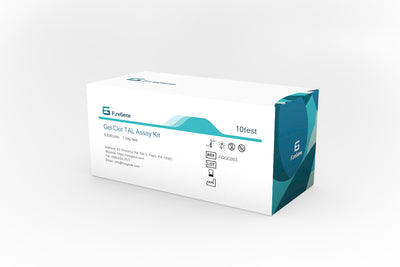
# Endotoxin Detection Using Gel Clot Assay Kit
## Introduction to Gel Clot Endotoxin Test Kit
The Gel Clot Endotoxin Test Kit is a widely used method for detecting and quantifying bacterial endotoxins in pharmaceutical products, medical devices, and other materials. This traditional yet reliable technique is based on the clotting reaction of horseshoe crab (Limulus polyphemus) amebocyte lysate (LAL) when exposed to endotoxins.
## How the Gel Clot Assay Works
The gel clot method operates on a simple principle: endotoxins trigger a cascade of enzymatic reactions in the LAL reagent, ultimately leading to the formation of a gel clot. The test involves mixing the sample with LAL reagent and incubating it at a controlled temperature (typically 37°C ± 1°C) for a specified period.
The presence or absence of a firm gel clot after incubation determines whether the sample contains endotoxins at or above the detection limit of the test. The sensitivity of the test is determined by the labeled sensitivity of the LAL reagent used (typically ranging from 0.03 to 0.25 EU/mL).
## Advantages of Gel Clot Method
Simplicity and Reliability
The gel clot assay is one of the simplest endotoxin detection methods, requiring minimal equipment and technical expertise. Its visual endpoint determination eliminates the need for complex instrumentation.
Cost-Effectiveness
Compared to other endotoxin detection methods like chromogenic or turbidimetric assays, the gel clot test is more economical, making it particularly suitable for small laboratories or facilities with budget constraints.
Regulatory Acceptance
The gel clot method is fully recognized by major pharmacopeias (USP, EP, JP) and regulatory agencies for endotoxin testing of pharmaceuticals and medical devices.
## Applications of Gel Clot Endotoxin Test Kit
- Quality control of parenteral pharmaceuticals
- Testing of medical devices that contact blood or cerebrospinal fluid
- Raw material screening
- Process water monitoring
- Research applications in microbiology and immunology
## Performing the Gel Clot Test
Sample Preparation
Proper sample preparation is crucial for accurate results. Most samples require dilution with endotoxin-free water to overcome potential interference factors and to bring the endotoxin concentration within the detectable range of the test.
Test Procedure
- Prepare the LAL reagent according to manufacturer instructions
- Add the test sample to the LAL reagent
- Incubate the mixture at 37°C for the specified time (usually 60 minutes)
- Invert the tube carefully to check for gel formation
- Interpret the results based on the presence or absence of a firm gel
Keyword: Gel Clot Endotoxin Test Kit
## Limitations and Considerations
While the gel clot method is highly reliable, it has some limitations:
- Qualitative or semi-quantitative nature (unless performing limit tests)
- Subjective endpoint determination
- Lower sensitivity compared to some modern methods
- Potential for false positives due to β-glucans or other interfering substances
## Conclusion
The Gel Clot Endotoxin Test Kit remains a valuable tool in pharmaceutical quality control and research laboratories. Its simplicity, cost-effectiveness, and regulatory acceptance make it an excellent choice for many endotoxin testing applications. While newer methods offer advantages in certain situations, the gel clot assay continues to be the gold standard for many routine endotoxin detection needs.
